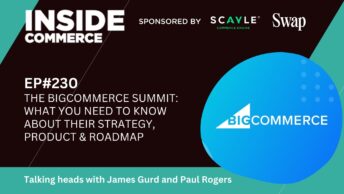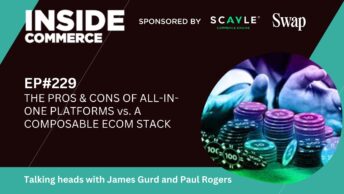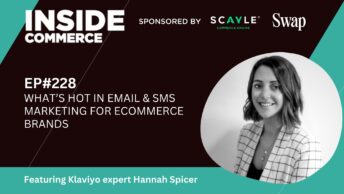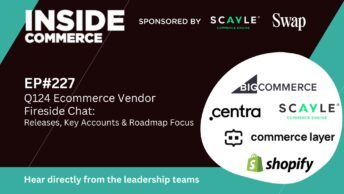An interview with J Lindeberg head of ecommerce Andreas Koschnike and Anton Johansson, CEO of their development partner Grebban.
Listen on your favourite player
Watch the video
Tl;dr
- How Dataships helps online businesses grow their marketing audiences
- The value of dynamic consent forms
- Satisfying compliance needs for data consent
The migration away from legacy monolith platforms to headless SaaS solutions has picked up pace over the last few years, as the mid-market seeks more cost effective and flexible ecommerce ecosystems.
However, no platform model or vendor is perfect, all decisions come with pros and cons and some big brands including Sweatybetty have committed to staying on platforms like Salesforce. In this episode, Paul interviews the head of ecommerce at lifestyle brand J Lindeberg, and their design and development partner, Grebban. He explores why the business decided it needed to modernise its ecommerce platform, why Shopify was chosen and the impact of deciding to go the headless route.
Tune in for practical insights into the decision-making process and implications of this ecommerce ride.
Discussion notes
- What was your reason for moving away from SFCC: which platforms did you review and why did you end up selecting Shopify?
- This was one of Grebban’s first Shopify projects, how did you find working with Shopify and liquid after working more with Centra and headless?
- We imagine JL is pretty global, how have you found the international side of Shopify: it looks like you’re using markets across EU and then maybe US is separate, is this the case?
- Howis Grebban approaching Shopify at the moment – is it a big focus for you as an agency? Is demand growing in your key markets?
- For the headless implementation, are there any areas that have been particularly good or bad so far with shopify? Things like scheduling of content changes and promotions are two areas we’ve seen people mention when moving from Salesforce.
- For the checkout, what are some of the key third parties you’ve used alongside Shopify and what does the overall tech stack look like?
- What was the scope from a design perspective? The site and overall brand piece look super strong – was there a brief to modernise it and push the brand a bit more?
- What were the most complex development challenges of the project from Grebban’s perspective?
- We love the “Looks” section of the site and the wild or mild filtering – was this new? Has it been used much by users?
- Lessons learned: if you were starting the project again, what would you have done differently?
- Where is the website headed, what’s next on the roadmap?
Want to suggest a topic or guest for a future episode? Contact us via the website or on LinkedIn.





